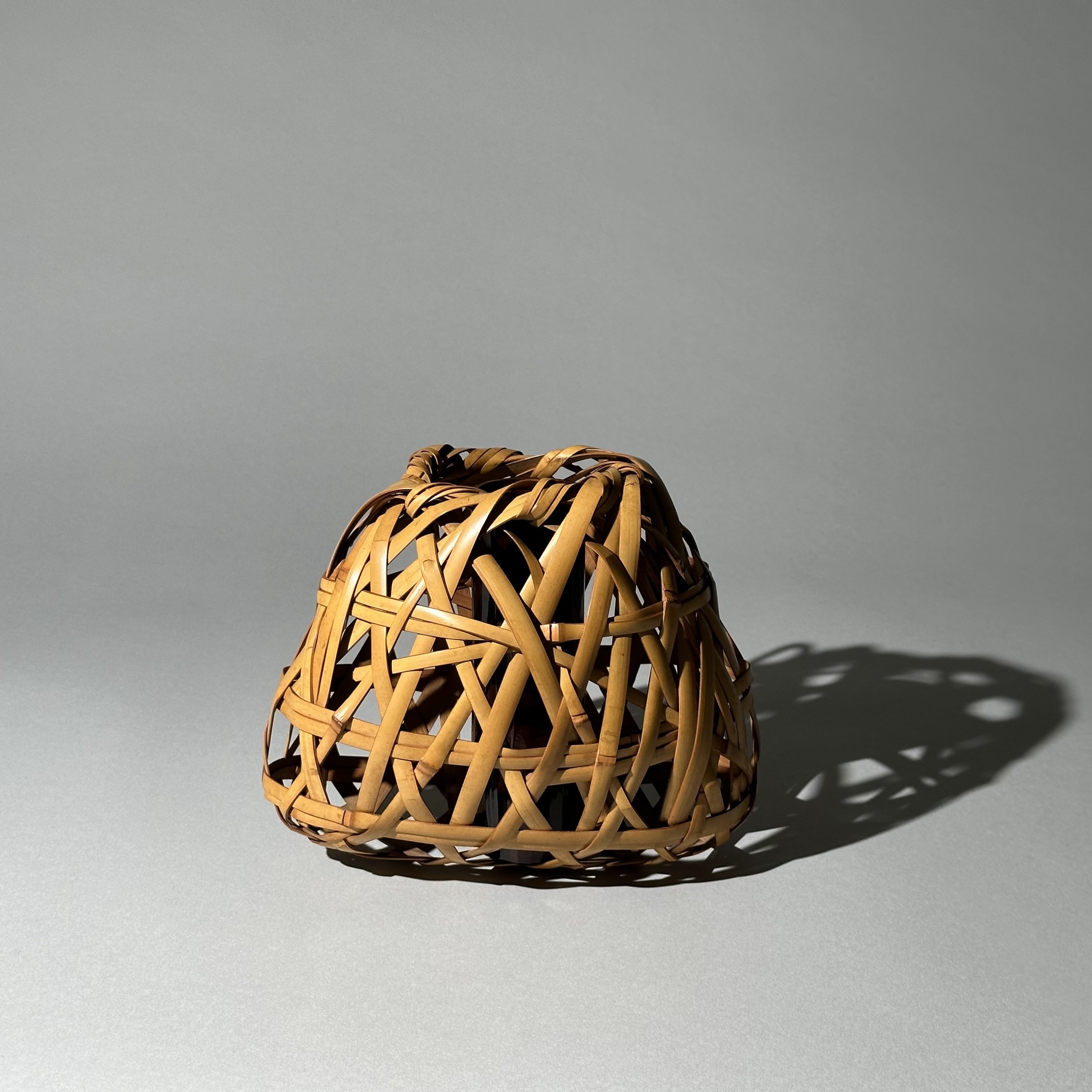 Image 1 of 10
Image 1 of 10

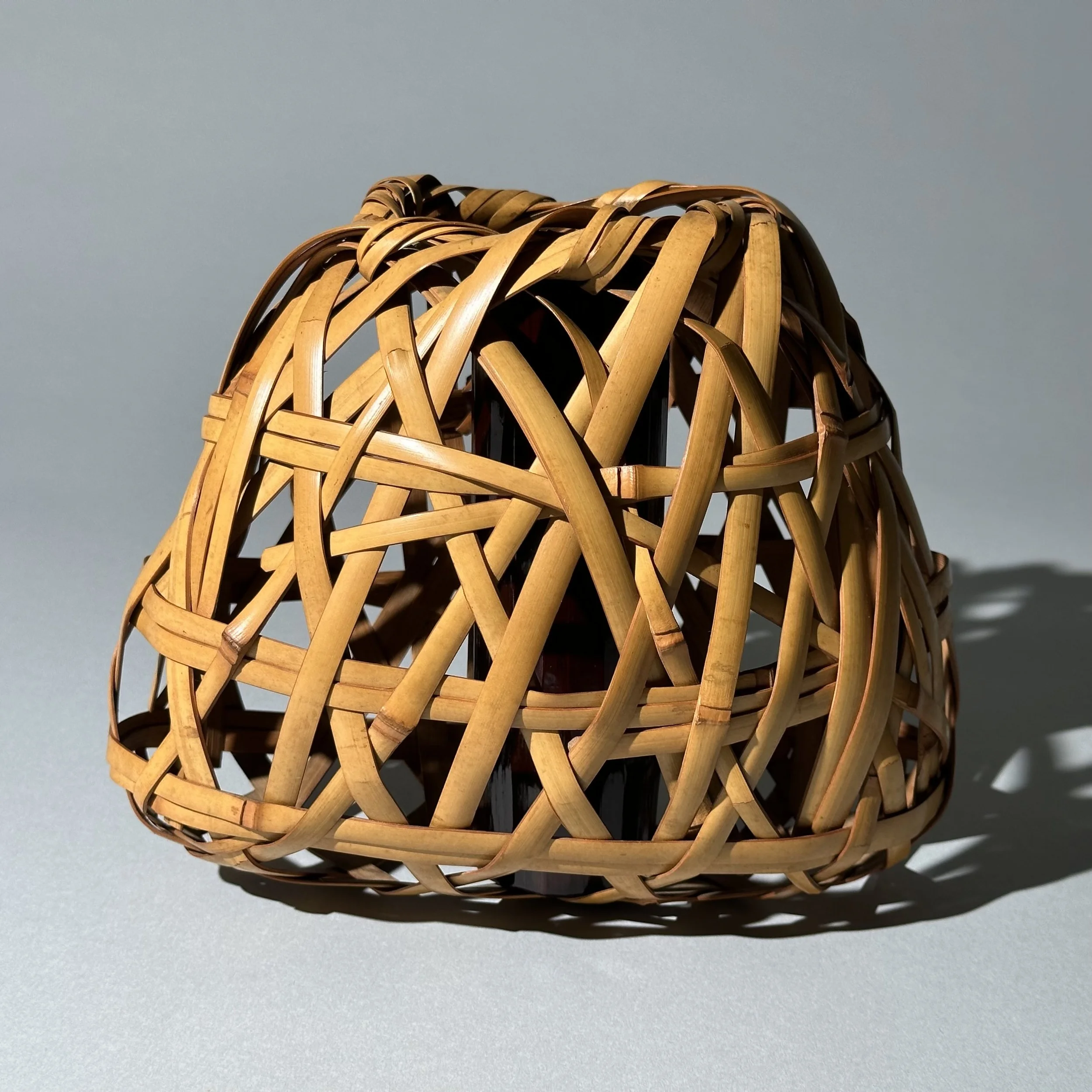 Image 2 of 10
Image 2 of 10

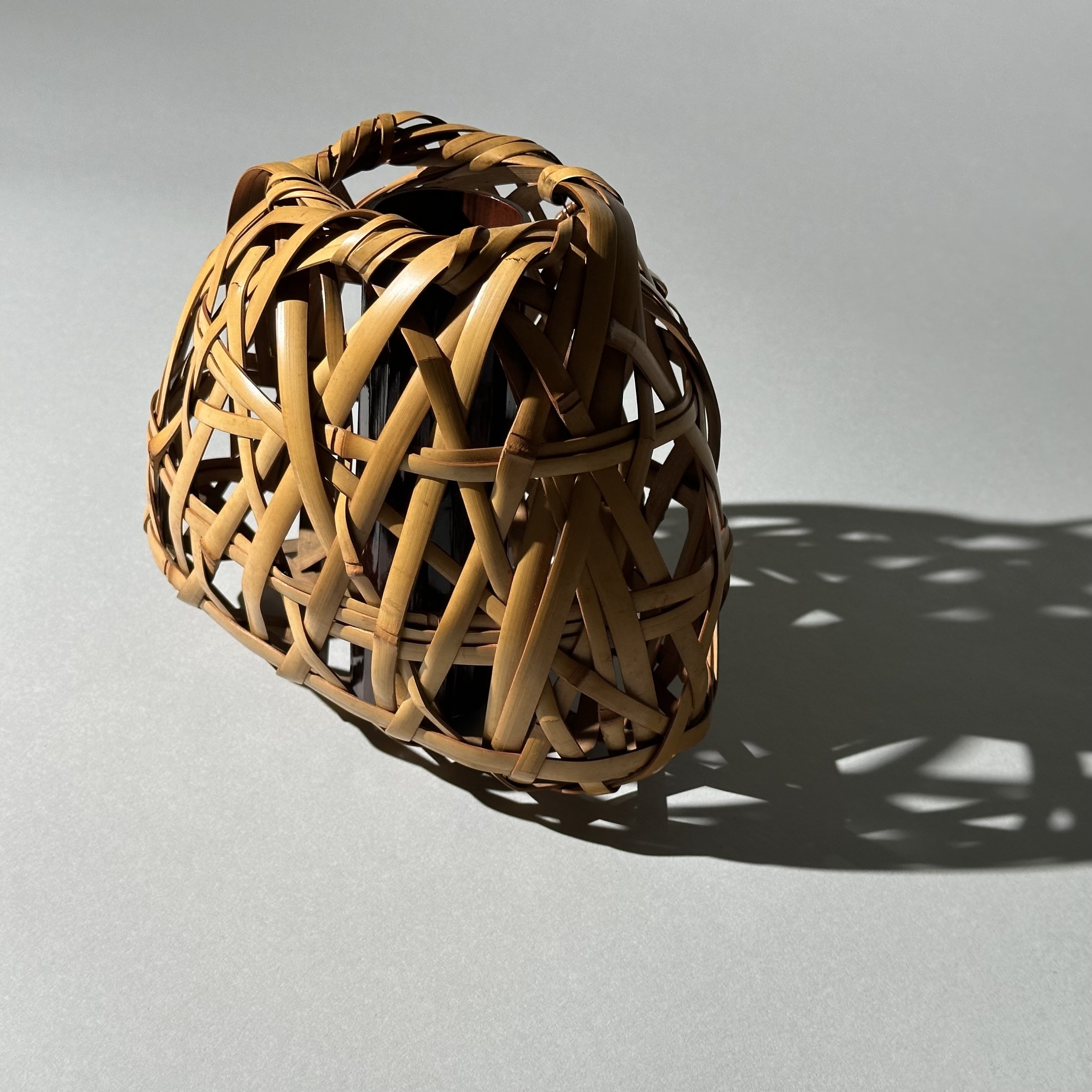 Image 3 of 10
Image 3 of 10

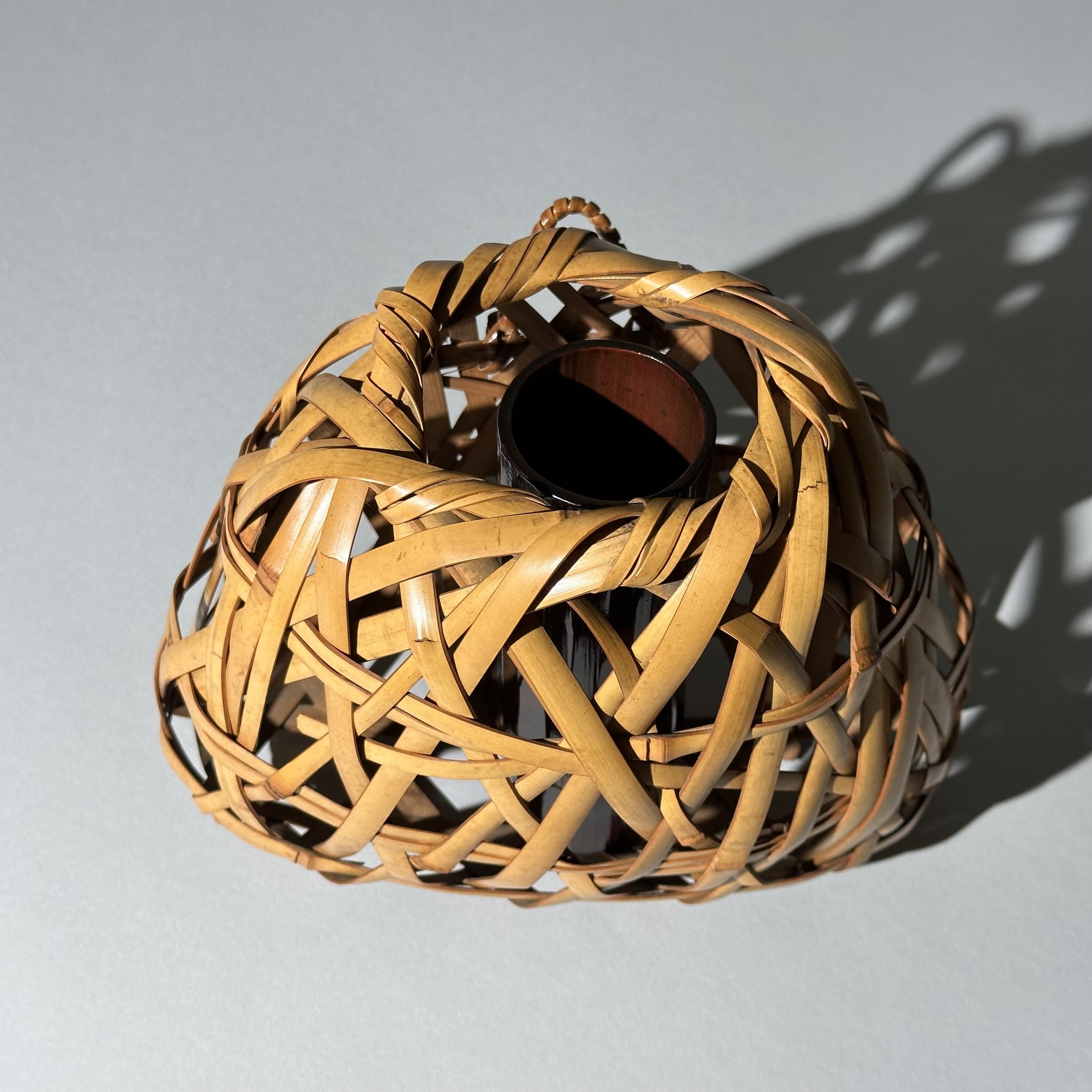 Image 4 of 10
Image 4 of 10

 Image 5 of 10
Image 5 of 10

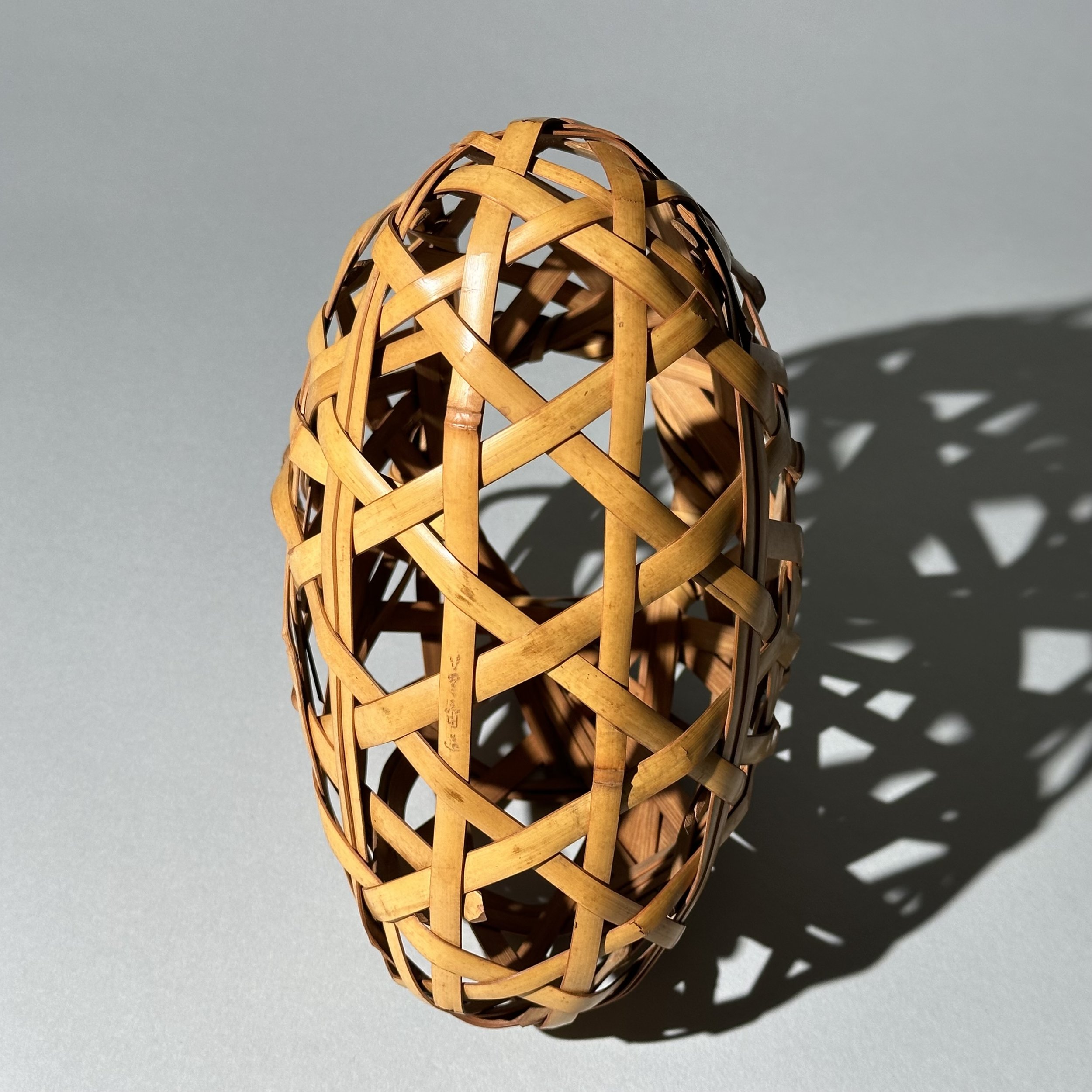 Image 6 of 10
Image 6 of 10

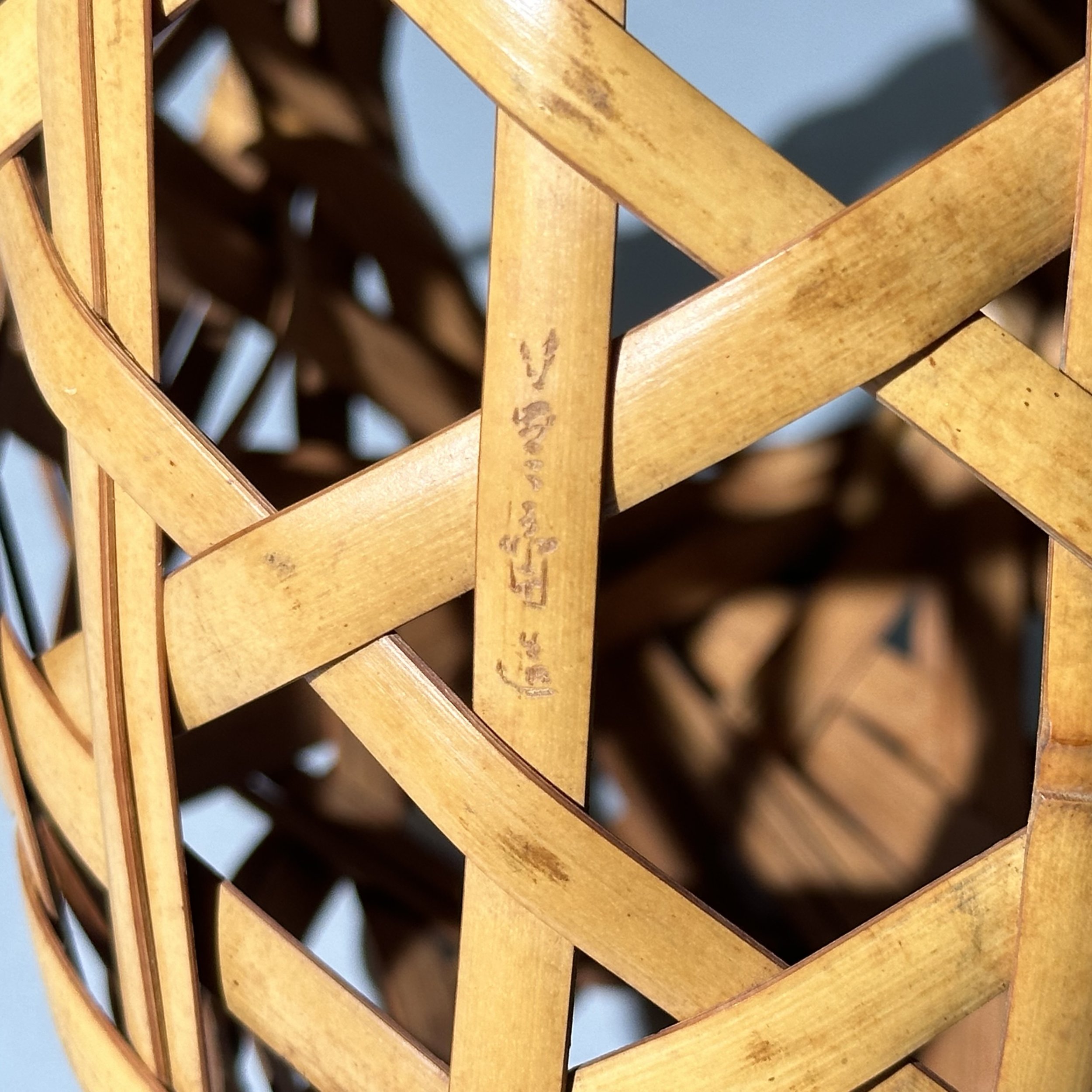 Image 7 of 10
Image 7 of 10

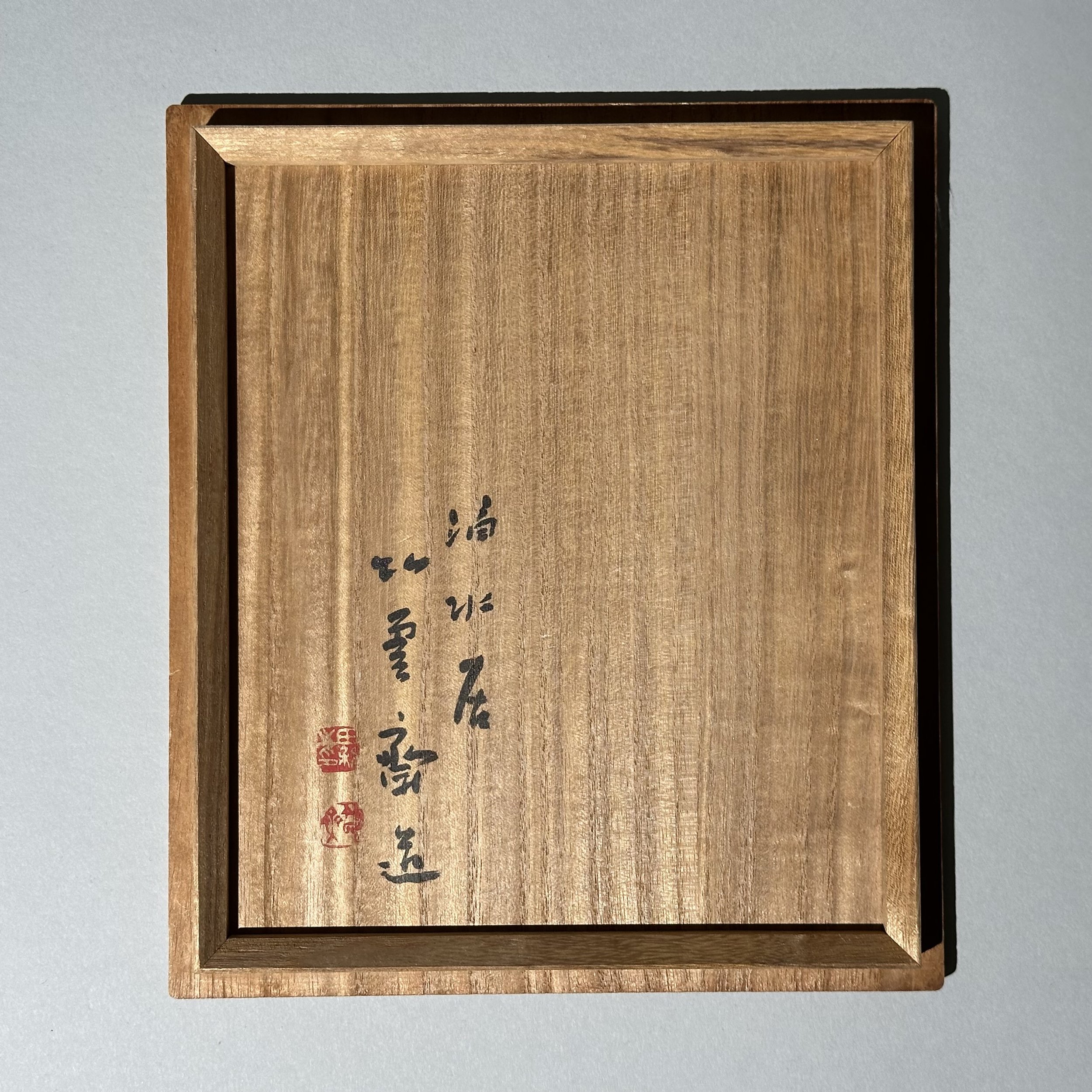 Image 8 of 10
Image 8 of 10

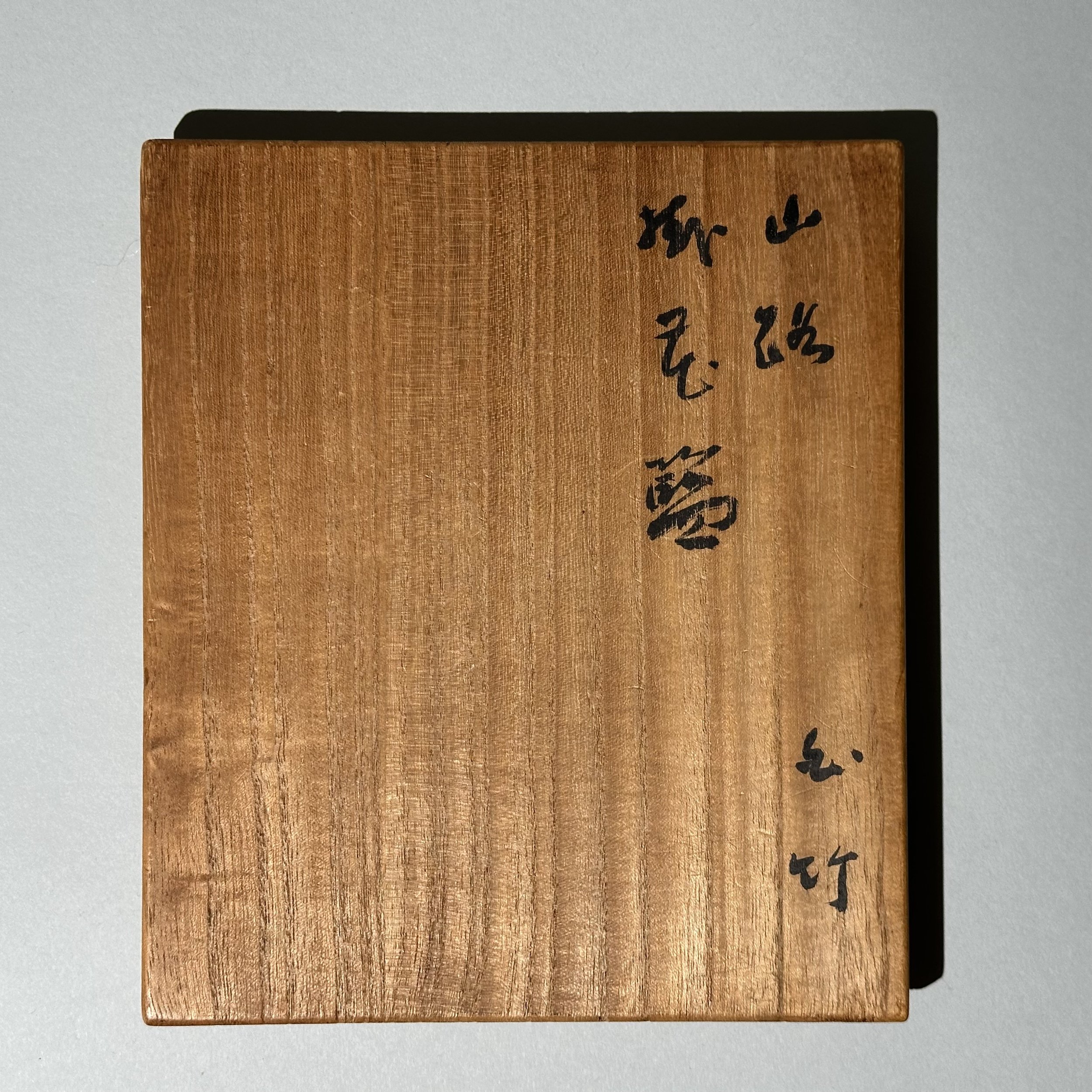 Image 9 of 10
Image 9 of 10

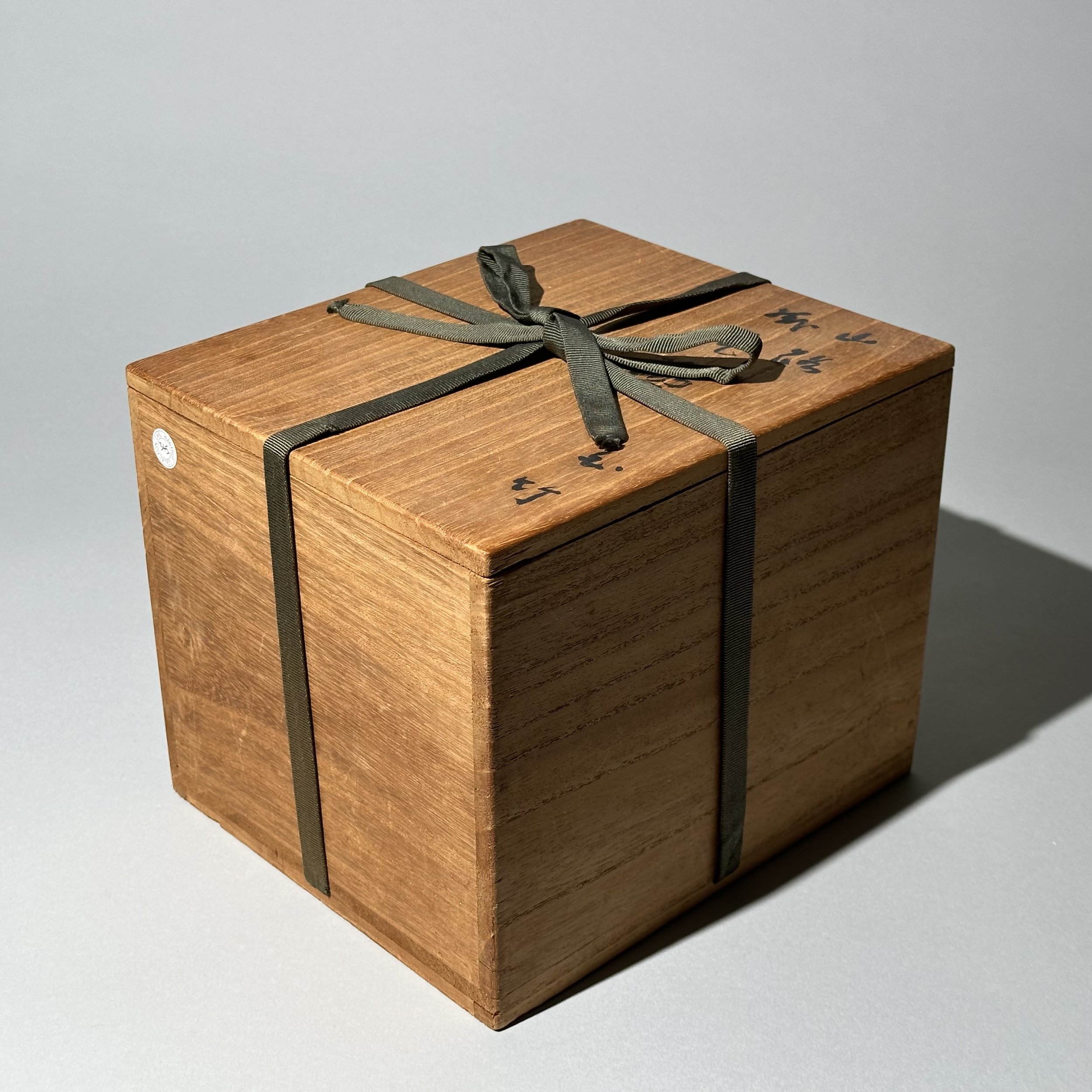 Image 10 of 10
Image 10 of 10











Bamboo wall vase (hanakago) by Tanabe Chikuunsai II (1910-2000)
Osaka, Japan
Showa Period (1926-1989)
Woven in blond bamboo with a loop to the reverse for hanging, signed to the base. Together with tomobako (original signed wooden box) and brown lacquered bamboo water container. 16cm high, 20cm wide.
Cat. 345
Tanabe Chikuunsai II
Chikuunsai II was born to Tanabe Chikuunsai I (1877-1937), who was apprenticed to Wada Waichisai I (1851-1901), one of the grandfathers of Japanese woven ikebana baskets (hanakago). Chikuunsai II assumed the dynastic name and took over the studio on his father's death in 1937. While Chikuunsai I concentrated on bunjin-kago (style of earlier imported Chinese baskets often with overarching handle and very tightly woven, symmetrical body), Chikuunsai II upon taking over the studio, while still working in the bunjin-kago style, began to favour a more wabi, open-weave style. The basket on offer is exemplary of his open style, and would have been used for tea ceremony, as it can be hung on the wall, and also used free-standing in the tokonoma alcove.
Chikuunsai II was an exhibitor at the annual Teiten and Nitten shows, and his works are found in the MET, the Minneapolis Institute of Art, and many other important museums and institutions around the world.
Osaka, Japan
Showa Period (1926-1989)
Woven in blond bamboo with a loop to the reverse for hanging, signed to the base. Together with tomobako (original signed wooden box) and brown lacquered bamboo water container. 16cm high, 20cm wide.
Cat. 345
Tanabe Chikuunsai II
Chikuunsai II was born to Tanabe Chikuunsai I (1877-1937), who was apprenticed to Wada Waichisai I (1851-1901), one of the grandfathers of Japanese woven ikebana baskets (hanakago). Chikuunsai II assumed the dynastic name and took over the studio on his father's death in 1937. While Chikuunsai I concentrated on bunjin-kago (style of earlier imported Chinese baskets often with overarching handle and very tightly woven, symmetrical body), Chikuunsai II upon taking over the studio, while still working in the bunjin-kago style, began to favour a more wabi, open-weave style. The basket on offer is exemplary of his open style, and would have been used for tea ceremony, as it can be hung on the wall, and also used free-standing in the tokonoma alcove.
Chikuunsai II was an exhibitor at the annual Teiten and Nitten shows, and his works are found in the MET, the Minneapolis Institute of Art, and many other important museums and institutions around the world.
Osaka, Japan
Showa Period (1926-1989)
Woven in blond bamboo with a loop to the reverse for hanging, signed to the base. Together with tomobako (original signed wooden box) and brown lacquered bamboo water container. 16cm high, 20cm wide.
Cat. 345
Tanabe Chikuunsai II
Chikuunsai II was born to Tanabe Chikuunsai I (1877-1937), who was apprenticed to Wada Waichisai I (1851-1901), one of the grandfathers of Japanese woven ikebana baskets (hanakago). Chikuunsai II assumed the dynastic name and took over the studio on his father's death in 1937. While Chikuunsai I concentrated on bunjin-kago (style of earlier imported Chinese baskets often with overarching handle and very tightly woven, symmetrical body), Chikuunsai II upon taking over the studio, while still working in the bunjin-kago style, began to favour a more wabi, open-weave style. The basket on offer is exemplary of his open style, and would have been used for tea ceremony, as it can be hung on the wall, and also used free-standing in the tokonoma alcove.
Chikuunsai II was an exhibitor at the annual Teiten and Nitten shows, and his works are found in the MET, the Minneapolis Institute of Art, and many other important museums and institutions around the world.
